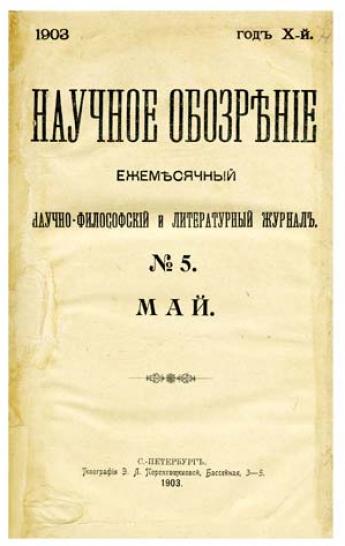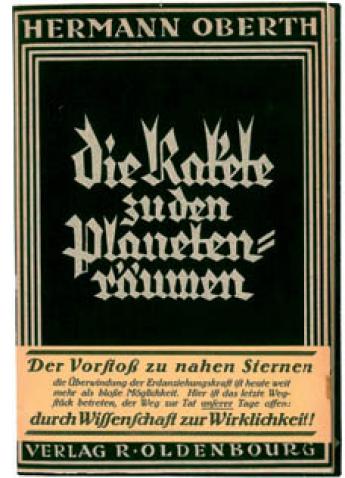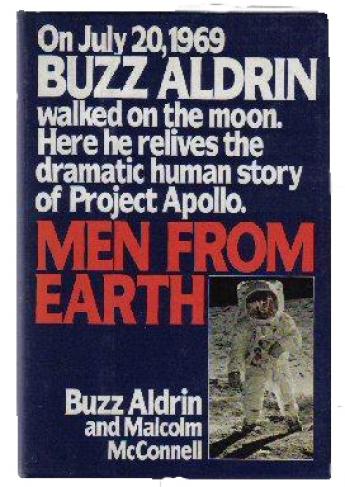Collecting Rare Books and First Editions - Space Travel and The Private Library

By L. D. Mitchell
We suggested, tongue-firmly-in-cheek, that a real back-to-the-land movement might encompass travel off-planet. Of course, this would require extensive use of high technology, something that the earth-bound movement frowns upon.
Like the back-to-the-land movement, though, the idea of human space travel has a long history, especially in fiction and mythology. The ancient Indian epics theMahabharata and Ramayana both feature mythical machines called Vimana that supposedly were capable of space flight. The Syrian satirist Lucian wrote ca. 125 CE a book called True History, which featured visits to the sun and the moon. Several stories within the The Thousand and One Nights feature space travel, including The Adventures of Bulukiya and The Ebony Horse.
The above, however, all represent proto-science fiction, and it is with realistic depictions of space travel that this post is concerned. In 1813, British mathematician William Moore published Treatise on the Motion of Rockets, the first exposition of rocket mechanics based on Newton's Third Law of Motion. But it was not until the early 20th century that this literature really can be said to have properly begun. It has its roots in the work of three men: Hermann Oberth, Konstantin Tsiolkovsky and Robert Goddard. Each of these pioneers of astronautics appear to have independently developed similar theories about the possibility of rockets escaping earth's gravitational pull, and their earliest expositions of such theories are the core of any private library purporting to cover space travel.
Tsiolokovsky was responsible for what is arguably the first major academic treatise on rocketry, ???????????? ??????? ??????????? ??????????? ????????? (The Exploration of Cosmic Space by Means of Reaction Devices), published in 1903. During his lifetime, Tsiolokovsky wrote over 500 works about space travel and related subjects, dealing with--among other topics - steering thrusters, multi-stage boosters, airlocks and closed-cycle biological systems.
Goddard first achieved prominence with publication of his monograph A Method of Reaching Extreme Altitudes, published by the Smithsonian Institution in 1919. Though this work dealt primarily with theoretical musings about matters like propellant, rocket mass, thrust and velocity, its final section dealt with calculations about what would be required to escape earth's gravity. This title was heavily ridiculed by U.S. media at the time, which thought the work too fanciful to be taken seriously. Time, of course, proved Goddard right. The New York Times, an early and vocal critic of this landmark title, issued A Correction 5o years later, the day after Apollo 11 was launched on its journey to the moon (17 July 1969) : "Further investigation and experimentation have confirmed the findings...and it is now definitely established that a rocket can function in a vacuum as well as in an atmosphere. The Times regrets the error."
Oberth's doctoral dissertation Die Rakete zu den Planetenräumen (The Rocket into Planetary Space) was first published in 1924 (having been rejected the previous year by his faculty committee at the University of Munich as "utopian"), although it did not achieve widespread prominence until it was republished in 1929 as a much longer work titled Wege zur Raumschiffahrt (Ways to Spaceflight). Like Tsiolokovsky, Oberth wrote a number of books and articles about space travel, including works dealing with space stations, electric spaceships, space suits and lunar exploration vehicles.
As the 20th century progressed, the works of these early astronautical pioneers gave rise to a rapidly expanding list of important scientific works about space travel.
Because so many titles have been published about space travel over the past several decades, collectors seeking to build a private library of non-fiction works will find our mini collection strategy (outlined in several previous posts) to be quite helpful in determining focus.
One could, for example, focus on foundational works, such as those covered in the first part of this post. Or one could focus on specific aspects of the technology required for space travel (such as thruster development or the development of space suits or closed-cycle biological systems). Or one could focus on travelogues of spacefaring, written by the few people who actually have undertaken such a journey.
Because so many different mini collections are possible, it might be helpful - unless you yourself were actively involved with the development of human spaceflight - to first purchase a good dictionary or encyclopedia about the topic to help you narrow down your areas of interest.
Other items that will help you better define your areas of interest are a good history (or two or three) of spaceflight, and a good bibliography of the literature (this also will help you determine if particular titles are even collectible - too few may exist in the marketplace in collectible condition to pursue them: a case in point would be many of the works covered by Michael Ciancone's Collector's Checklist of Pre-1958 Books on Rocketry and Space Travel...).
Since much of the important theoretical work published about space travel first appeared in periodicals and pamphlets, anyone undertaking to include these items in their personal library will face several thorny conservation issues.
You are looking for rare books and pamphlets on aeronautics?
>>> Browse the ILAB Metasearch
You wish to collect space travel books and pamphlets?



